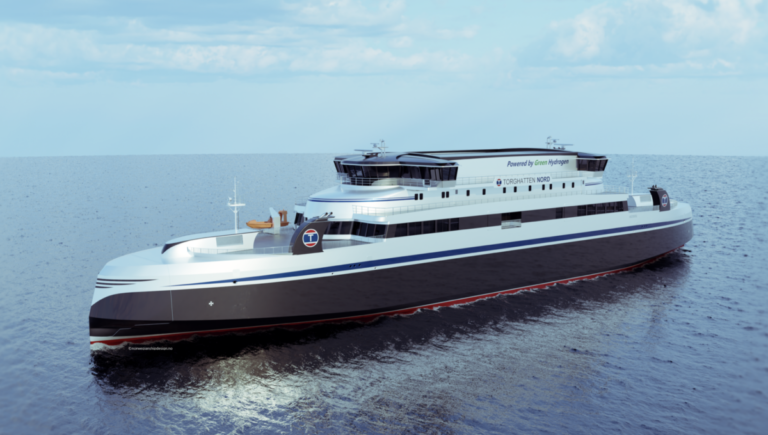Norwegian Ship Design Co. has agreed to help build what it says will be the world’s two largest hydrogen ships, while Norwegian Hydrogen has announced plans to collaborate with Australia’s Provaris Energy on hydrogen export opportunities.
Norwegian Ship Design Society And Torghatten Nord signed a shipyard contract for the construction of ‘the two largest hydrogen ships in the world’. The companies said each ferry, measuring 117 meters in length, can accommodate 120 cars and 599 passengers, powered by 6,400 kW of fuel cells. “The ferries are designed for 100% zero emissions and feature a multi-hybrid propulsion system with hydrogen-electric as the primary mode and diesel-electric as the secondary mode,” added Norwegian ship design.
Provaris energy and Norwegian Hydrogen agree to jointly identify and develop several locations in the Nordic region for the large-scale production and export of hydrogen to the European market. “New projects will be strategically located in areas with robust grid connections and power supplies,” said Provaris energy. “These sites will facilitate the construction of state-of-the-art electrolyzers and hydrogen compression facilities, linked to export jetties. Provaris’ H2Neo carriers will transport the hydrogen, while the H2Leo ship will serve for storage.” The term of the agreement is 24 months.
The European Commission has drawn up the conditions for the second auction for sustainable hydrogen production of the European Hydrogen Bank. “The Innovation Fund will do that launch a second auction before the end of 2024. As part of a “lessons learned” exercise, draft terms and conditions for the IF24 auction have been is published for the purpose of collecting structured feedback from key stakeholders involved”, said the executive body of the EU. The document does not define the budget, but proposes to reduce the ceiling price from 4.50 euros/kg to 3.50 euros/kg. It is also proposed to increase the value of the completion guarantee from 4% to 10% and reduce the time to commissioning from five to three years. The first EU-wide auction closed in February and evaluation results will be available in the coming weeks.
The Fraunhofer Institute of Machine Tools and Forming Technology (Fraunhofer IWU) has introduced a prototype roll embossing system, which could reduce costs and support the mass production of bipolar plates (BPPs). “The production line at Fraunhofer IWU is running. The system consists of three roller stands and requires an installation area of 4,500 mm x 3,300 mm.” said Fraunhofer IWU. Electrolyzers and fuel cells require bipolar plates, which consist of two conversion components: the membrane electrode assembly (MEA) in a fuel cell system and the catalyst-coated membrane (CCM) in an electrolyzer.
Stargate hydrogen said it will launch its new alkaline electrolysis stack at the World Hydrogen Summit from May 13 to 15 in Rotterdam. The Stellar 100 electrolysis stack is produced in Europe and has a green hydrogen production capacity of up to 100 Nm3/h. “We measured that the average cell voltage in the stack is lower than 1.85 V (at 0.5 A/cm², 15 barg, 70°C), which corresponds to a stack-level efficiency of 80% (HHV), ” said Thomas Ottitsch, manager of the electrolysis test field (ElyLab) at the Center for Solar Energy and Hydrogen Research Baden-Württemberg (ZSW).
Lhyfe And Ugitech has agreed to this to set up a green hydrogen production unit near Ugitech’s Ugine site in Savoie, France. Lhyfe plans to install an electrolysis capacity of up to 30 MW, which can produce up to 12 tons per day. “This green hydrogen would mainly be used at the Ugitech plant and supplied via a pipeline,” Lhyfe said. The companies are now entering the feasibility study phase of the project.
This content is copyrighted and may not be reused. If you would like to collaborate with us and reuse some of our content, please contact: editors@pv-magazine.com.


